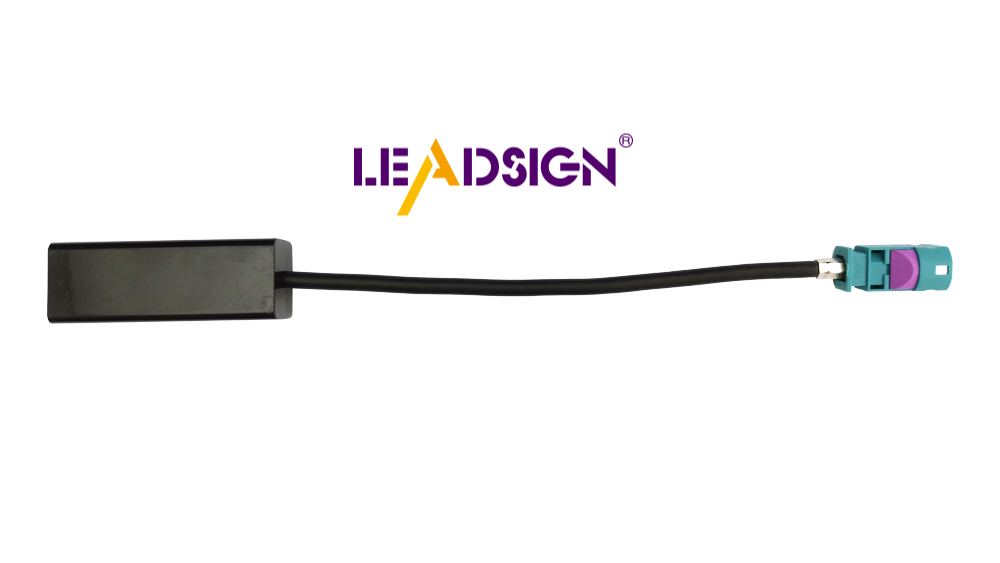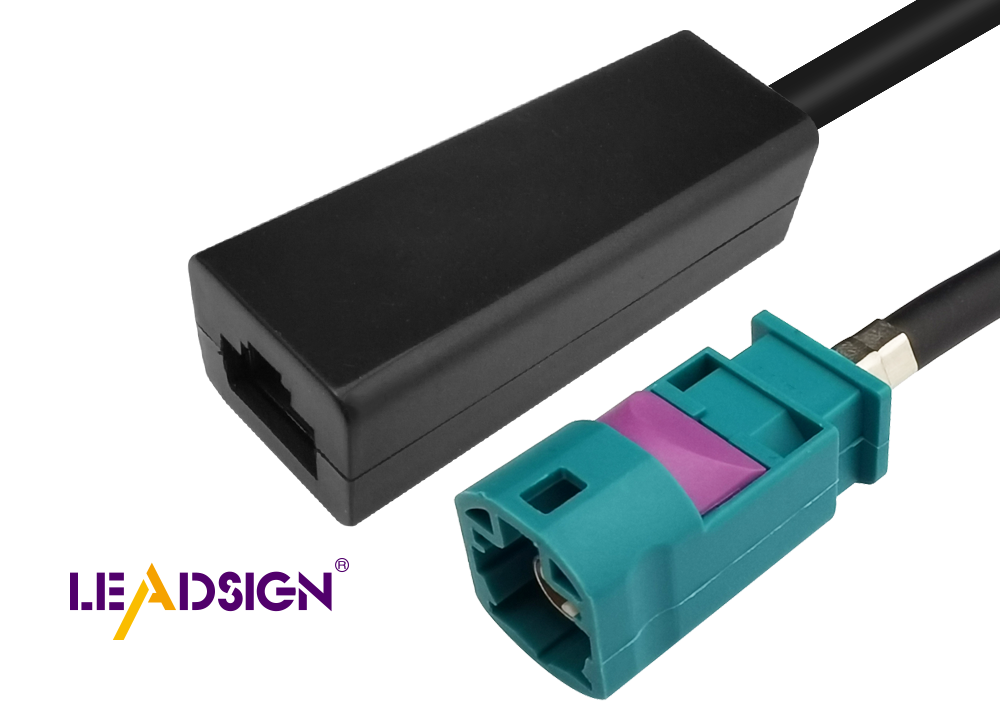All About RJ45 Connector Variants

RJ45 connectors play a crucial role in networking by linking computers, Wi-Fi routers, and various devices to Ethernet networks. These connectors can support speeds up to 10Gbps, ensuring fast and dependable data transfer. The RJ45 female connector is the most commonly used for Ethernet cables. Understanding the different types of RJ45 connectors, including rf connectors, is essential for selecting the right one to meet your specific needs. Gaining knowledge about these types enhances your understanding of networking solutions. Additionally, RF connectors contribute to efficient data transmission across a wide range of applications.
Understanding RJ45 Connectors
What is an RJ45 Connector?
RJ45 connectors are used for Ethernet connections. They have eight pins that match the wires in an Ethernet cable. This design helps data move quickly.
How They Look
The RJ45 female connector is shaped like a rectangle with a clip to hold it in place. The plastic cover keeps the wires safe inside. Its small size makes it easy to plug in and unplug from devices.
Pin Setup
Each pin in the RJ45 connector does something special. The setup follows either T568A or T568B rules. These rules make sure devices can work together.
History of RJ45 Connectors
Work on RJ45 connectors started in the 1960s and 1970s. AT&T made a system with modular connectors. This made setting up things fast and easy. People could set up their own systems at home or work.
Changes Over Time
RJ45 connectors changed to fit today's needs. Now, they can handle speeds up to 10Gbps. Businesses enjoy fast data movement and lots of bandwidth. These changes show how important reliable networks are becoming.
Making Them Standard
Making standards was key for everyone using RJ45 connectors widely. It became normal for connecting voice and data tools. This standardization ensures that rf connectors and RJ45 female connectors work well in many uses.
Types of RJ45 Connector Variants

Shielded vs. Unshielded
RJ45 connectors have two main kinds: shielded and unshielded. Each has special features for different uses.
Features and Benefits
Shielded RJ45 connectors have a metal cover. This cover stops electromagnetic interference (EMI). It helps in places with lots of interference. The shield keeps data moving smoothly. Unshielded RJ45 connectors don't have this metal cover. They are lighter and bend easily. They work well where there's little interference.
Use Cases
Shielded RJ45 connectors are great for factories and data centers. These places have many electronic devices. The shield stops signal problems. Unshielded RJ45 connectors are good for homes and offices with fewer devices. They save money too.
Category Variants (Cat5, Cat6, Cat7, etc.)
RJ45 connectors work with different cable types. Each type has its own speed and performance.
Specifications and Performance
Cat5: Speeds up to 100 Mbps, good for basic internet.
Cat5e: Better than Cat5, speeds up to 1 Gbps.
Cat6: Handles 10 Gbps over short spaces, great for fast networks.
Cat6a: Like Cat6 but works over longer distances.
Cat7: Shields each wire pair, handles 10 Gbps in busy areas.
Compatibility Considerations
Pick the right RJ45 connector carefully. Match it with the cable type you use. A Cat6 connector fits a Cat6 cable best. Wrong matches can slow things down. Check if your device supports the cable type too. Proper matching makes data move best.
Parts of RJ45 Connectors
What They're Made Of
RJ45 connectors are key for Ethernet links. The materials used help them last and work well.
Conductive Parts
Conductive parts let data move fast. Copper is mainly used for contacts. It helps signals stay strong. Gold on contacts stops rust and keeps connections steady. These materials make RJ45 good for fast data.
Insulation Parts
Insulation keeps conductive parts safe. Plastic is often used to cover them. It protects from damage and stops wires from touching. Insulation helps RJ45 work in many places.
How They're Built
The way RJ45 connectors are made affects how they work. Good design makes them easy to use with devices.
Modular Plugs
Modular plugs allow quick, safe connections. They follow set rules to fit Ethernet tools. This makes setup simple without needing tools.
Jack Design
The jack holds the plug tight. The female connector is common in networks. It keeps things connected during use, ensuring smooth data flow between devices.
Uses of RJ45 Connectors
Networking and Data Sharing
Ethernet Uses
Ethernet networks need RJ45 connectors for fast data sharing. They link devices like computers and routers. The new RJ45 cables are very fast. They carry voice, data, and power. Easy plug-and-play makes setup simple. Technicians like them because they work well.
Phone Systems
Phone systems use RJ45 connectors too. They send voice and data signals well. These connectors replace old phone cords with smaller ones. They make phone calls clear in modern systems.
Other Purposes
Factory Use
Factories use RJ45 connectors for machines and sensors. Their strong build handles tough conditions. They keep data flowing in automated tasks.
Home Use
Homes use RJ45 connectors to link devices like computers and printers. They give fast internet for games and streaming. People like how easy they are to use at home.
FAQs and Practical Advice
Common Questions
Installation Tips
RJ45 connectors need careful handling when setting up. Follow these steps for easy installation:
Prepare the Cable: Remove the outer cover to see the wires. Be careful not to harm the inner wires.
Arrange the Wires: Line up wires using T568A or T568B rules. This makes sure they work with devices.
Insert into the Connector: Push wires into the RJ45 connector slots fully.
Crimp the Connector: Use a tool to lock wires in place securely.
Test the Connection: Check with a cable tester to ensure it works right.
Troubleshooting
Problems with RJ45 can slow networks down. Fix common issues like this:
Check Wiring Order: Wrong order causes problems. Make sure wire order is correct.
Inspect the Connector: Broken connectors cause bad links. Change any damaged ones.
Test the Cable: Use a tester for breaks or shorts, replace if needed.
Examine Network Device: Bad ports affect links, test with a good cable.
Best Practices
Maintenance and Care
Taking care of RJ45 helps them last longer. Follow these tips:
Regular Inspections: Look for wear on connectors, replace worn parts fast.
Clean Contacts: Dust can hurt performance, use a soft brush often.
Avoid Bending Cables: Sharp bends break cables, keep curves gentle.
Store Properly: Coil unused cables neatly in cool, dry spots to keep safe.
Future Trends
RJ45 keeps changing with new tech. Stay updated on trends:
Increased Speeds: Future types will have faster data rates and more bandwidth.
Enhanced Durability: New materials will make them last longer and resist damage better.
Integration with IoT: RJ45 will be used more in smart devices soon.
Sustainability Focus: Makers will use eco-friendly materials for less impact.
RJ45 connectors are key for networking. They help connect Ethernet devices easily. Knowing the types helps you pick the right one. This choice improves data flow and network work. RJ45 connectors keep getting better, handling faster speeds and more uses. Future changes will make them stronger and work with smart tech. Using these new ideas makes networks strong and good for homes, offices, and factories.
See Also
Exploring the Ins and Outs of Fakra Male Connectors
Navigating the World of HSD Connectors
Understanding the Basics of Fakra Female Connectors

